How to Create a Resilience-Boosting Diet
🌿 Introduction: The Connection Between Food and Resilience
Resilience isn’t just about bouncing back from challenges—it’s about how your mind and body recover, adapt, and grow stronger each time. Whether you’re managing chronic stress, recovering from illness, or simply trying to handle daily life with more balance, your diet plays a key role in that process.
What you eat directly influences your hormones, neurotransmitters, inflammation levels, and gut health, all of which shape your ability to cope with stress and maintain emotional balance. In this article, we’ll explore how to build a resilience-boosting diet—one that nurtures both your nervous system and your mental stamina.
We’ll also dive into supportive tools like supplements 🧴, breathwork 🌬️, and therapy 🪞 to show you how they interact with your nutrition to create a complete foundation for emotional strength.
Looking for supplements for This? Click here.
🥗 Part 1: The Foundations of a Resilience-Boosting Diet

1️⃣ Balance Blood Sugar to Stabilize Mood
Your brain thrives on steady glucose levels. When your blood sugar fluctuates wildly (due to skipped meals, refined carbs, or excess sugar), it triggers stress hormones like cortisol—which can make you irritable, anxious, or fatigued.
Tips:
Eat every 3–4 hours.
Combine protein + healthy fat + complex carbs at each meal.
Replace sugary snacks with nuts, berries, or hummus with veggies.
Example:
Instead of a pastry and coffee ☕, try Greek yogurt with flaxseeds and blueberries.
2️⃣ Prioritize Anti-Inflammatory Foods
Chronic inflammation is one of the biggest enemies of resilience. It makes your body more reactive to stress and contributes to brain fog, depression, and fatigue.
Include these:
🫐 Berries and colorful fruits (rich in antioxidants)
🫒 Olive oil and avocado (healthy fats)
🐟 Fatty fish like salmon or sardines (omega-3s)
🌿 Spices like turmeric, ginger, and rosemary
Avoid processed foods, refined oils, and excess alcohol, which increase inflammation.
3️⃣ Support Gut Health
Your gut microbiome communicates directly with your brain through the gut-brain axis. A balanced microbiome helps regulate mood, immunity, and stress resilience.
Include:
🥬 Prebiotic fibers (onions, garlic, leeks, oats, bananas)
🧫 Probiotics (yogurt, kefir, sauerkraut, kimchi)
🍵 Polyphenols (green tea, dark chocolate, berries)
Avoid artificial sweeteners, which may disrupt gut bacteria.
4️⃣ Focus on Brain-Nourishing Nutrients
A resilience-boosting diet should target key micronutrients that protect your brain from oxidative stress and maintain emotional balance.
Top nutrients:
Magnesium: helps calm the nervous system 🧘♀️
B-vitamins (especially B6, B12, folate): support serotonin and dopamine production
Vitamin D: regulates mood and immune health ☀️
Zinc: aids neurotransmitter balance
Omega-3 fatty acids: reduce inflammation and enhance cognitive function
These nutrients work together to help you stay mentally sharp and emotionally steady.
Looking for supplements for This? Click here.
5️⃣ Stay Hydrated
Even mild dehydration can increase cortisol and anxiety. Aim for 2–3 liters per day, more if you sweat heavily. Add electrolytes or coconut water for extra minerals.
💧 Hydration is emotional regulation in disguise. When your cells are hydrated, your body handles stress signals far more efficiently.
🍎 Part 2: Building Your Resilience Meal Plan
Let’s translate these principles into practical daily habits.
🌞 Morning: Start Calm and Grounded
Goal: Stabilize cortisol and energize the brain.
Example breakfast:
Scrambled eggs with spinach and avocado 🥑
Oatmeal with chia seeds, walnuts, and cinnamon
Matcha green tea 🍵 for L-theanine (a natural anxiety reducer)
Avoid sugar-spiking options like cereals, pastries, or fruit juice.
🌤️ Midday: Fuel Focus and Performance
Goal: Maintain steady energy and mood throughout work or daily tasks.
Example lunch:
Grilled salmon or tofu with quinoa, broccoli, and olive oil
Lentil or chickpea salad with mixed greens and tahini dressing
Add fermented food (kimchi or sauerkraut)
Snack ideas:
Handful of almonds
Apple with peanut butter 🍎
Greek yogurt with berries
🌙 Evening: Support Recovery and Sleep
Goal: Lower cortisol, promote serotonin and melatonin production.
Example dinner:
Baked turkey or tempeh with sweet potatoes and roasted veggies
Herbal tea with chamomile or lemon balm 🍵
Optional magnesium supplement before bed
Avoid caffeine or heavy late-night meals, which interfere with sleep and hormonal recovery.
💊 Part 3: Supplements That Support Resilience
Even with a great diet, stress and modern life can create nutrient gaps. The right supplements can strengthen your body’s ability to handle pressure and recover faster.
🧠 1️⃣ Magnesium
Why it matters: Magnesium helps regulate cortisol, muscle relaxation, and GABA activity—the brain’s calming neurotransmitter.
Best forms:
Magnesium glycinate (for relaxation and sleep)
Magnesium malate (for energy and muscle recovery)
Dosage: 200–400 mg per day (consult your healthcare provider first).
☀️ 2️⃣ Vitamin D
Low vitamin D is linked to depression, fatigue, and immune dysfunction. Since most people don’t get enough sun, supplementation can make a big difference.
Tip: Pair with vitamin K2 for better calcium metabolism and brain protection.
🧬 3️⃣ Omega-3 Fatty Acids
EPA and DHA, found in fish oil or algae oil, help reduce neuroinflammation and support serotonin signaling.
Dosage: Around 1–2 grams of combined EPA/DHA daily.
🌿 4️⃣ Adaptogenic Herbs
Adaptogens help your body adapt to stress—literally.
Top choices:
Ashwagandha: lowers cortisol, boosts resilience 🌱
Rhodiola Rosea: enhances stamina and mental performance
Holy Basil (Tulsi): balances mood and energy
Use consistently for several weeks for best results.
🌼 5️⃣ Probiotics
Gut bacteria influence serotonin and stress regulation. A multi-strain probiotic (containing Lactobacillus and Bifidobacterium) supports both digestion and mood stability.
🫖 6️⃣ Herbal and Amino Support
L-Theanine: from green tea; promotes calm focus
GABA: helps relaxation before sleep
Chamomile extract: soothes mild anxiety
Saffron: shown in studies to improve mood naturally 🌸
🌬️ Part 4: Breathwork for Nervous System Resilience
Nutrition builds the foundation, but breathwork reinforces the bridge between your body and mind. Every breath you take influences your vagus nerve, which regulates heart rate, digestion, and emotional control.
1️⃣ The Physiology of Breathing and Stress
When you’re stressed, your breath becomes shallow and fast—signaling to your brain that danger is near. Slow, deep breathing sends the opposite message: “I’m safe.”
Breathwork = nervous system training.
It lowers cortisol, increases heart rate variability (HRV), and enhances resilience over time.
2️⃣ Daily Breathwork Practices
🕊️ Box Breathing (4-4-4-4):
Inhale 4 sec → Hold 4 → Exhale 4 → Hold 4.
Perfect for calming anxiety and improving focus.
🌊 Diaphragmatic Breathing:
Breathe deeply into your belly for 5–10 minutes. This activates the vagus nerve and boosts emotional control.
🔥 Alternate Nostril Breathing (Nadi Shodhana):
Balances left and right brain hemispheres, excellent for stress management.
🌌 4-7-8 Method (Sleep Aid):
Inhale 4 → Hold 7 → Exhale 8.
Promotes relaxation and helps release mental tension before bed.
3️⃣ Combine Breathwork with Nutrition
Breathwork amplifies the benefits of a resilience diet by improving oxygen flow and reducing oxidative stress. For example, practicing deep breathing before meals helps digestion and nutrient absorption—a perfect synergy between food and mindfulness.
Want to try Breathwork? Click Here.
🪞 Part 5: Therapy and Emotional Resilience

A truly resilience-boosting lifestyle isn’t just physical—it’s emotional. Therapy provides the space to process stress, reframe thoughts, and build adaptive patterns that nutrition alone can’t address.
1️⃣ Cognitive-Behavioral Therapy (CBT)
CBT helps you identify negative thought loops that fuel stress eating, self-criticism, or emotional burnout. When paired with a balanced diet, it enhances mental clarity and decision-making.
Example:
When you notice cravings after stress, CBT techniques help you pause and choose nourishment over numbing.
2️⃣ Somatic and Mind-Body Therapies
Approaches like Somatic Experiencing, Internal Family Systems (IFS), or Body-Centered Therapy integrate physical sensations and emotions. This can reconnect you with hunger cues, body awareness, and safety—core components of resilience.
💬 When your body feels safe, your mind follows.
3️⃣ Group and Community Therapy
Humans are wired for connection. Sharing meals, joining support groups, or even cooking with others activates oxytocin, the bonding hormone that reduces anxiety and strengthens trust.
Social nutrition—what you digest emotionally in relationships—matters just as much as physical nutrition.
4️⃣ Integrating Therapy and Lifestyle
Think of therapy as your emotional gym.
Diet provides the fuel.
Breathwork regulates the system.
Therapy helps you rebuild from within.
Together, they form a triangle of resilience—each corner reinforcing the other.
Looking for online therapy ? Click Here.
🧭 Part 6: Creating Your Resilience Plan
Now that you understand the key pillars, let’s map out a simple, actionable plan you can start implementing today.
🔹 Step 1: Assess Your Current Habits
Track your meals, stress levels, and sleep for a week. Identify when you feel most reactive or drained. Do certain foods trigger brain fog or anxiety? Awareness is step one.
🔹 Step 2: Adjust One Meal at a Time
Instead of overhauling everything, pick one meal—like breakfast—to optimize. Add protein, reduce sugar, and include healthy fats. You’ll notice steadier energy within days.
🔹 Step 3: Add One Supplement at a Time
Start with magnesium or omega-3s, then layer others as needed. Introduce new supplements slowly to gauge effects.
🔹 Step 4: Pair Meals with Breathwork
Before eating, take 3 deep belly breaths. This shifts you into the parasympathetic state, improving digestion and nutrient assimilation.
🔹 Step 5: Reflect and Adjust with Support
Use journaling, therapy, or community check-ins to stay accountable. Resilience isn’t perfection—it’s consistency through imperfection.
🌈 Final Thoughts
Creating a resilience-boosting diet isn’t about restriction—it’s about support. It’s about feeding your body what it needs to handle life’s turbulence without breaking.
With every meal, breath, and therapy session, you’re rewiring your biology toward stability and strength. You become not just someone who survives stress—but someone who thrives because of it.
Resilience is a daily practice, and your plate is the first place it begins. 🍽️💪
📚 References
Chatterjee, R., The Stress Solution: The 4 Steps to Reset Your Body, Mind, Relationships & Purpose, HarperCollins, 2019.
Harvard Health Publishing. “Foods linked to better brainpower.” Harvard Medical School, 2022.
National Institutes of Health. “Omega-3 Fatty Acids and Stress Regulation.” NIH.gov, 2021.
Smith, M. A. et al. “The Role of Magnesium in Stress and Resilience.” Nutrients, 2020.
Cryan, J. F., & Dinan, T. G. “Mind-altering microorganisms: The impact of the gut microbiota on brain and behaviour.” Nature Reviews Neuroscience, 2012.
Huberman, A. “Breathing Tools for Stress & Sleep.” Huberman Lab Podcast, 2023.
World Health Organization. “Healthy diet.” WHO.int, 2023.
Sarris, J. et al. “Herbal medicines in the treatment of psychiatric disorders: A systematic review.” Phytotherapy Research, 2018.
American Psychological Association. “Building your resilience.” APA.org, 2020.
Kabat-Zinn, J. Full Catastrophe Living: Using the Wisdom of Your Body and Mind to Face Stress, Pain, and Illness, Bantam, 2013.
Related Posts
-
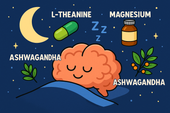
Nootropics That Promote Calm and Rest
Explore the world of calming nootropics — natural brain enhancers that promote relaxation, better focus, and deeper rest. Learn how L-Theanine, magnesium, ashwagandha, and other adaptogens help balance your nervous system, reduce stress, and support restorative sleep.
-

Best Natural Supplement Stack for Sleep
Discover the best natural supplement stack for deep, restorative sleep. Learn how nutrients like magnesium, L-theanine, glycine, and calming herbs such as chamomile and ashwagandha work together to relax your body, calm your mind, and improve sleep quality—naturally and safely.
-
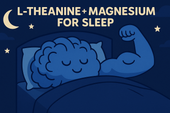
Combining L-Theanine and Magnesium for Sleep: A Calm Night, Naturally
Discover how combining L-Theanine and Magnesium can help you drift into deep, restorative sleep. Learn how this natural duo calms the mind, relaxes the body, and supports your nervous system—without grogginess the next morning.
-

How to Sleep Better After Intense Workouts
Struggling to fall asleep after a tough workout? Learn how to optimize your post-training recovery with nutrition, hydration, and science-backed sleep strategies. Discover how to calm your nervous system, balance hormones, and wake up fully recharged for your next session.
-
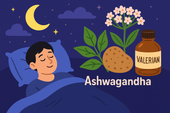
Ashwagandha and Valerian: A Bedtime Combo for Deep Rest and Emotional Reset
Discover the calming synergy of Ashwagandha and Valerian root, two natural sleep aids that help quiet the mind, ease anxiety, and promote deeper rest. Learn how this herbal duo supports the nervous system, balances stress hormones, and restores emotional peace — without next-day grogginess.
-

Best Teas and Herbal Blends for Calmness: Nature’s Way to Restore Inner Peace
Ashwagandha, the ancient adaptogenic herb, helps your body find balance during stress. Known as “Indian ginseng,” it supports cortisol regulation, boosts energy, and restores calm clarity. Discover how this powerful root promotes resilience, emotional balance, and steady vitality — one cup at a time. 🌸
-

Parenting and Emotional Strength: How to Raise Children Without Losing Yourself
Empathy is the bridge that connects hearts — the quiet power to understand, feel, and support another’s emotions without judgment. Learn how empathy strengthens relationships, enhances communication, and cultivates deeper compassion in everyday life. 🌿
-
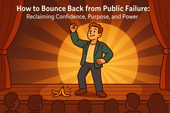
How to Bounce Back from Public Failure: Reclaiming Confidence, Purpose, and Power
Visualization is more than imagination — it’s brain training for resilience. By picturing calm, success, or healing, you activate the same neural pathways as real experience. Learn how daily visualization rewires your brain for confidence, emotional balance, and recovery from stress. ✨
-

Coping with Financial Stress Through Resilience: How to Stay Grounded When Money Feels Tight
Body awareness is the foundation of emotional resilience. By tuning into your body’s signals — tension, fatigue, or calm — you learn to recognize stress before it overwhelms you. Discover how mindfulness, gentle movement, and breathwork can deepen your connection with your body and restore balance from the inside out. 🧘
-

How to Stay Positive During Chronic Illness: A Guide to Emotional Strength and Hope
Creativity is more than art — it’s a form of healing. Whether through painting, writing, music, or small acts of expression, creativity helps release emotion, calm the nervous system, and reconnect you to joy. Discover how to use creativity as a tool for emotional balance, resilience, and self-discovery. 🌿
-
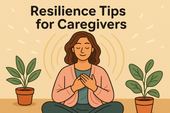
Resilience Tips for Caregivers: How to Stay Strong While Caring for Others
Joy isn’t the absence of pain — it’s the quiet strength to find light even in challenging times. Cultivating joy through small daily moments restores balance, releases stress, and reminds you of life’s beauty. Learn how to reconnect with authentic happiness, rebuild emotional energy, and nurture your nervous system through gratitude, presence, and play. 🌿
-

Building Resilience After a Breakup: How to Heal, Rebuild, and Rise Stronger
Social connection is one of the strongest predictors of emotional resilience. During difficult times, genuine relationships act as anchors — calming the nervous system, reducing stress hormones, and helping you regain perspective. Learn how cultivating real human connection can strengthen your mind, heart, and overall well-being. 🌿
-

How to Stay Emotionally Strong During Job Loss
Your emotions are powered by brain chemistry — a delicate balance of neurotransmitters like serotonin, dopamine, and cortisol. When these chemicals work in harmony, you feel calm, focused, and resilient. Learn how daily habits, nutrition, and mindfulness can support your brain chemistry and boost emotional well-being naturally. 🌿
-
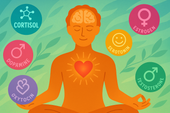
The Role of Hormones in Emotional Stability: How Your Chemistry Shapes Your Calm
Hormones shape more than your body — they shape your emotions, resilience, and sense of calm. From cortisol to serotonin, these chemical messengers influence how you react to stress, connect with others, and recover from challenges. Learn how to balance your hormones naturally to build lasting emotional stability and harmony within. 💫
-

Mitochondria and Emotional Energy: The Cellular Power Behind Your Mood
Breathwork is one of the most powerful tools for emotional regulation and cellular balance. Through intentional breathing, you can calm your nervous system, increase oxygen flow to the brain, and even support mitochondrial energy. Learn how conscious breathing connects body and mind — transforming stress into presence and emotional strength. 🌿
-

Inflammation and Its Impact on Mood Resilience: The Silent Link Between Body and Mind
Inflammation doesn’t just affect the body — it impacts the mind. Chronic inflammation alters brain chemistry, depletes serotonin, and makes emotional recovery harder. Learn how calming inflammation through nutrition, mindfulness, and sleep can restore balance, resilience, and a renewed sense of emotional strength. 💫
-
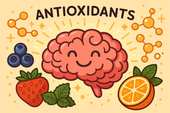
How Antioxidants Protect Emotional Well-being: The Hidden Link Between Oxidative Stress and Mental Health
Antioxidants do more than protect your body — they defend your mind. By neutralizing oxidative stress, antioxidants support serotonin, dopamine, and brain energy pathways that keep you calm, focused, and emotionally balanced. Discover how foods like berries, green tea, and dark chocolate nourish your brain, boost mood, and strengthen resilience from the inside out. 🌿✨
-
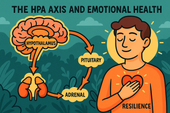
The HPA Axis and Emotional Health: The Hidden Bridge Between Stress and Mind
Neuroplasticity — the brain’s ability to rewire and adapt — is the foundation of emotional healing and resilience. When you face stress, trauma, or change, your neural pathways can reshape themselves to support new patterns of calm, focus, and self-awareness. Learn how daily practices like mindfulness, therapy, and breathwork strengthen neuroplasticity to transform emotional pain into personal growth. 🌸
-
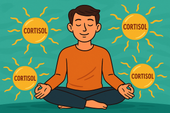
Why Cortisol Control Is Key to Resilience: Mastering Stress to Build Emotional Strength
Controlling cortisol — the body’s main stress hormone — is the secret to lasting resilience. When cortisol levels stay balanced, your mind becomes clearer, emotions steadier, and energy more sustainable. Learn how breathwork, mindset shifts, adaptogens, and daily rhythms can help you calm your stress response and build true inner strength. 🌞💪
-
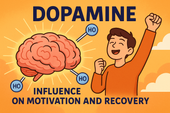
Dopamine’s Influence on Motivation and Recovery: Reigniting Drive and Balance
Healthy relationships are the foundation of emotional balance and resilience. Whether romantic, familial, or platonic, genuine connection releases dopamine, serotonin, and oxytocin — the brain’s “bonding trio” — helping us feel secure, motivated, and seen. Learn how trust, empathy, and communication not only strengthen your connections but also reshape your nervous system for deeper emotional well-being. 🌿🤝
-
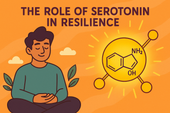
The Role of Serotonin in Resilience: How This “Mood Molecule” Shapes Emotional Strength
Serotonin — often called the “resilience molecule” — plays a vital role in how we handle stress, regulate mood, and recover from emotional challenges. Beyond happiness, this powerful neurotransmitter helps balance the gut-brain axis, stabilize the nervous system, and support emotional flexibility. Learn how nutrition, sunlight, mindfulness, and adaptogens can naturally boost serotonin and strengthen your emotional resilience. 🌞🧠
-
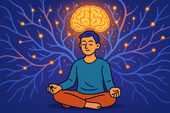
How Neuroplasticity Supports Emotional Growth: Rewiring the Brain for Resilience
Neuroplasticity is the brain’s built-in power to grow, adapt, and heal — and it’s the foundation of emotional transformation. Every mindful breath, compassionate act, or reframed thought strengthens new neural pathways that support resilience and self-awareness. Learn how your brain rewires through daily habits, helping you turn emotional challenges into opportunities for growth and calm. 🌿
-

Tai Chi and Adaptogens for Mind-Body Balance: The Art of Harmonizing Energy and Resilience
Alchemy isn’t just an ancient science — it’s a timeless symbol of transformation and inner balance. By blending the physical and spiritual, alchemy teaches us that change begins from within. Just as metals are refined into gold, we too can transmute emotional pain, stress, and chaos into clarity and strength through mindful practice and self-awareness. 🌙✨
-

Cold Therapy and Emotional Control: Training the Mind Through the Body
Cold therapy isn’t just for athletes — it’s a tool for emotional mastery. By exposing your body to controlled cold, you train your nervous system to stay calm under stress, improving focus, mood, and resilience. This article explores the science of cold exposure, its impact on hormones and the vagus nerve, and how ice baths and cold showers can help you build emotional control, one breath at a time. 🧊🧘♂️
-

How Music Influences Emotional Recovery: The Healing Soundtrack of the Mind
Neuroplasticity — the brain’s ability to rewire and heal itself — is at the heart of emotional recovery. Through mindful habits, music, therapy, and consistent mental stimulation, your brain can form new connections that support resilience and well-being. Discover how neuroplasticity turns pain into growth, helping you rebuild balance, focus, and emotional strength. 🌿
-
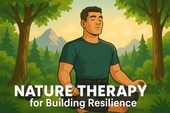
Nature Therapy for Building Resilience: Reconnecting With the Healing Power of the Earth
Nature therapy helps rebuild emotional resilience by reconnecting you with the healing rhythms of the Earth. From forest walks to sunlight exposure, nature restores balance to your nervous system, lowers stress hormones, and teaches emotional adaptability. Learn how spending time outdoors can enhance mental clarity, calm anxiety, and awaken your natural capacity to heal. 🌞
-
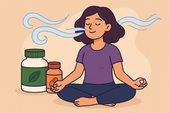
Breathwork Techniques That Pair with Supplements: The Ultimate Synergy for Stress Relief and Mental Clarity
Breathwork and supplements create a powerful mind-body synergy for stress relief, focus, and energy. By combining intentional breathing with adaptogens, nootropics, and calming nutrients, you can naturally regulate cortisol, sharpen mental clarity, and boost emotional balance. This guide explores the best breathwork techniques and supplement pairings to help you feel centered, calm, and energized from the inside out. 🌿
-
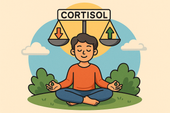
Why Cortisol Balance Matters for Emotional Strength
Balancing cortisol — your body’s main stress hormone — is essential for emotional resilience. When cortisol is chronically high, your mind stays stuck in survival mode, leading to fatigue, anxiety, and emotional instability. This article explores how nutrition, supplements, breathwork, and therapy can help restore healthy cortisol rhythms, regulate the nervous system, and strengthen your ability to handle life’s challenges with calm focus and emotional strength. 🌿
-
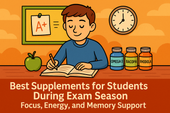
Best Supplements for Students During Exam Season: Focus, Energy, and Memory Support
Studying late into the night? Learn which natural supplements can boost focus, memory, and mental stamina during exam season — without the crash. From omega-3s to Bacopa and Rhodiola, discover your brain’s ultimate exam support stack. 🎓🧠
-
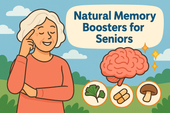
Natural Memory Boosters for Seniors: How to Keep Your Mind Sharp and Focused
Stay mentally sharp and confident as you age. Discover science-backed natural supplements and lifestyle habits that boost memory, focus, and brain longevity for seniors. 🌿🧠
-
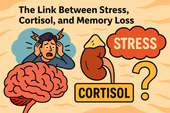
The Link Between Stress, Cortisol, and Memory Loss
Chronic stress can quietly erode your memory — and cortisol is the key culprit. Learn how stress hormones affect the brain, why the hippocampus shrinks under pressure, and how natural strategies can help you restore memory and mental clarity. 🧠✨
-
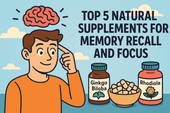
How to Build a Daily Supplement Routine for Memory Health
Want to sharpen your memory and stay mentally clear? Learn how to build a daily supplement routine for memory health — from morning focus to nighttime brain repair. Discover science-backed nutrients that boost recall, focus, and long-term cognitive resilience. 🧠🌿
-
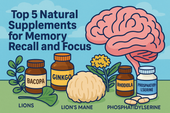
Top 5 Natural Supplements for Memory Recall and Focus
Looking to boost memory and concentration naturally? Discover the top 5 supplements — Bacopa, Ginkgo Biloba, Lion’s Mane, Rhodiola, and Phosphatidylserine — that enhance focus, recall, and long-term brain health. 🧠✨
-
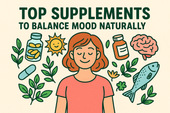
Top Supplements to Balance Mood Naturally
From omega-3s to adaptogens, discover the top natural supplements proven to support emotional balance, reduce stress, and promote inner calm — safely and effectively. 🌿✨
-

Can Omega-3 Fatty Acids Help with Mood Disorders?
Omega-3 fatty acids do more than support heart health — they can help balance mood, reduce depression, and calm anxiety. Discover how EPA and DHA nourish your brain, fight inflammation, and support emotional well-being from within. 🌊🧠
-

Vitamin D and Mood: The Sunshine Vitamin for Emotional Balance
Could the key to emotional balance be as simple as a little sunlight? Discover how vitamin D — the sunshine vitamin — influences serotonin, reduces inflammation, and helps you feel more positive and resilient year-round. ☀️💛
-

The Role of Magnesium in Reducing Irritability and Low Mood
Feeling on edge or emotionally drained? Magnesium could be the missing link between your body and your mood. Discover how this essential mineral reduces irritability, balances neurotransmitters, and helps your nervous system find calm again. 🌿✨
-
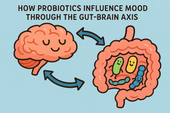
How Probiotics Influence Mood Through the Gut-Brain Axis
Discover how probiotics can do more than support your digestion—they can actually uplift your mood. This article explores the fascinating gut-brain axis and how balancing your gut bacteria through probiotics may help reduce anxiety, improve emotional stability, and support long-term mental well-being. 🌿🧠
-
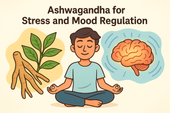
Ashwagandha for Stress and Mood Regulation
Discover how Ashwagandha, the powerful adaptogenic herb 🌿, helps your body manage stress and regulate mood. Learn how it balances cortisol, boosts GABA and serotonin, and supports emotional stability — helping you feel calm, focused, and resilient every day.
-
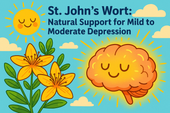
St. John’s Wort: Natural Support for Mild to Moderate Depression
Discover how St. John’s Wort, the “sunshine herb” 🌼, naturally supports mild to moderate depression. Learn how it boosts serotonin, balances mood, and promotes emotional resilience — with research showing its effectiveness compares to antidepressants, but with fewer side effects.
-
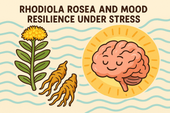
Rhodiola Rosea and Mood Resilience Under Stress
Discover how Rhodiola rosea helps your body adapt to stress 🌿. Learn how this powerful adaptogen balances cortisol, supports serotonin and dopamine, and strengthens emotional resilience — helping you stay calm, focused, and energized under pressure.
-

Chamomile and Lavender: Herbal Calm for Emotional Fluctuations
Discover how chamomile and lavender bring calm to emotional ups and downs 🌿. Learn how these two soothing herbs balance your nervous system, ease anxiety, and support restful sleep — naturally helping you find peace and emotional stability.
-
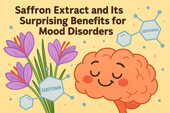
Saffron Extract and Its Surprising Benefits for Mood Disorders
Discover how saffron extract — the golden spice of joy 🌸 — can naturally support mood balance, ease anxiety, and lift mild depression. Learn what science says about its serotonin-boosting power, the ideal dosage, and how this ancient remedy compares to modern antidepressants.
-
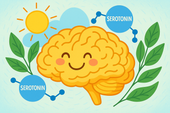
5-HTP and Serotonin: A Natural Path to Lifting Mood
Discover how 5-HTP naturally boosts serotonin 🌞 — the neurotransmitter behind mood, sleep, and emotional balance. Learn how this plant-derived compound supports happiness, reduces anxiety, and improves rest by helping your brain create more serotonin the gentle, natural way.
-
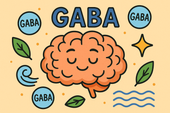
GABA Supplements for Reducing Anxiety and Mood Swings
Discover how GABA supplements can help reduce anxiety and balance mood naturally 🌿. Learn how this calming neurotransmitter works to quiet the mind, ease stress, and improve sleep — plus which nutrients and habits can boost your body’s own GABA production for long-term emotional stability.
-
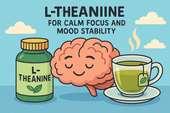
L-Theanine for Calm Focus and Mood Stability
Discover how L-theanine, the calming compound found in green tea 🍵, promotes focus, relaxation, and mood stability. Learn the science behind how it balances neurotransmitters, reduces stress hormones, and enhances clarity — helping you stay centered, calm, and productive without sedation.
-
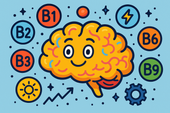
B Vitamins and Brain Chemistry: Supporting Energy and Emotional Balance
Discover how B vitamins power your brain chemistry ⚡. Learn how B6, B9, and B12 support serotonin, dopamine, and energy production — helping boost focus, mood, and emotional balance. From diet to supplements, explore how this vital nutrient group keeps your mind resilient and your energy steady.
-

N-Acetyl Cysteine (NAC) and Mood Disorders: What the Research Says
Learn how N-Acetyl Cysteine (NAC) supports brain health and mood balance 🧠. Discover how this antioxidant helps reduce oxidative stress, regulate glutamate, and improve emotional stability in depression, bipolar disorder, and anxiety — backed by cutting-edge psychiatric research.
-

Supplements for Bipolar Disorder: What May Support Stability
Discover the best supplements for bipolar disorder 🌿 that may support emotional stability and brain health. Learn how nutrients like omega-3s, magnesium, vitamin D, and NAC can help reduce inflammation, balance neurotransmitters, and complement traditional treatment safely.

















































